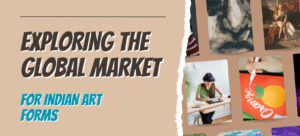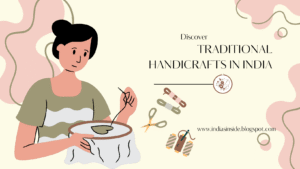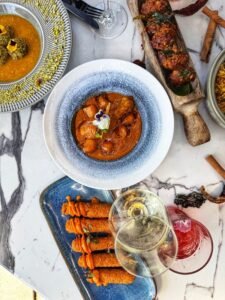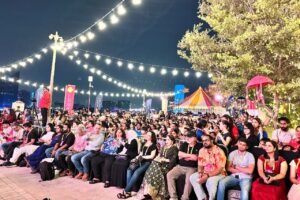Exploring the Global Market for Indian Art Forms
Introduction: Indian art forms have long been celebrated for their...
Read MoreReviving Traditional Handicrafts in India: Initiatives aimed at preserving indigenous crafts
Introduction: India is renowned for its rich tapestry of traditional...
Read MoreFitoor Santa Monica Celebrates Diwali With One-Day Indian Feast on October 20
Ocean Avenue Restaurant Marks the Festival of Lights With a...
Read MoreIndian missions across globe celebrate Diwali, showcasing rich cultural heritage
Tokyo, Oct 18 : Indian diplomatic missions worldwide on Saturday...
Read MoreIndian Culture:
India’s culture is one of the oldest and most diverse in the world, shaped by thousands of years of history, spiritual traditions, languages, and artistic expressions. Known as the “Land of Unity in Diversity”, India’s culture reflects its rich heritage and continues to evolve with modern influences. From festivals and music to food and fashion, India’s culture is a blend of tradition and innovation.
Historical Roots of Indian Culture:
Ancient Civilizations:
India’s cultural history dates back to the Indus Valley Civilization (3300–1300 BCE), known for its advanced urban planning, trade networks, and art. The Vedic period introduced early Hindu scriptures, philosophy, and rituals that still influence Indian spirituality.
Medieval Era:
The medieval period saw the blending of Hindu, Buddhist, Jain, Islamic, and later, Christian traditions. Mughal rule brought Persian influences in architecture (Taj Mahal), cuisine (biryani, kebabs), and language (Urdu).
Colonial Period and Cultural Renaissance:
British colonialism influenced India’s education, law, and language, but also sparked cultural revival movements. Leaders like Rabindranath Tagore and Swami Vivekananda emphasized India’s spiritual and intellectual contributions to the world.
Religion and Spirituality:
Major Religions:
India is the birthplace of Hinduism, Buddhism, Jainism, and Sikhism, and home to large Muslim, Christian, and other faith communities. Spirituality plays a key role in daily life, with temples, mosques, churches, and gurudwaras present in every corner of the country.
Festivals:
Festivals are the heartbeat of Indian culture:
-
Diwali – the festival of lights
-
Holi – the festival of colors
-
Eid – symbolizing harmony and gratitude
-
Christmas & Easter – celebrated with devotion
-
Baisakhi, Onam, Pongal, and Durga Puja – showcasing India’s regional diversity
Art, Music, and Dance:
Traditional Art Forms:
India is known for its classical dance forms like Bharatanatyam, Kathak, Odissi, and Kuchipudi, which narrate mythological stories. Folk dances like Bhangra, Garba, and Lavani reflect local traditions.
Music:
Indian classical music has two major traditions: Hindustani (North Indian) and Carnatic (South Indian). Instruments like sitar, tabla, veena, and mridangam remain iconic. Modern Indian music blends Bollywood, indie pop, and fusion genres, appealing to global audiences.
Visual Arts and Craft:
Intricate handicrafts such as Madhubani painting, Pattachitra, Warli art, and terracotta work represent India’s artistic heritage. These crafts are passed down generations and remain a livelihood for rural artisans.
Language and Literature:
Linguistic Diversity:
India has 22 official languages and hundreds of dialects. Sanskrit is one of the oldest languages in the world, while Hindi is widely spoken across the country. English serves as a unifying language for education, business, and governance.
Literature:
Indian literature is vast and diverse, from the Vedas, Ramayana, and Mahabharata to modern writers like R.K. Narayan, Arundhati Roy, and Ruskin Bond. Poetry, short stories, and epics are an integral part of Indian culture.
Food and Cuisine:
Indian cuisine is famous for its variety and spices. Each region has its unique dishes:
-
North India: Butter chicken, naan, rajma-chawal
-
South India: Dosa, idli, sambhar
-
West India: Dhokla, pav bhaji
-
East India: Fish curry, rasgulla
The use of spices like turmeric, cumin, and cardamom is not only for flavor but also for health benefits.
Clothing and Fashion:
Traditional clothing varies by region: sarees, lehengas, dhotis, and kurta-pajamas remain popular for festivals and weddings. Modern Indian fashion blends Western styles with traditional elements, making India a hub for textile and apparel industries.
Modern Influences and Global Reach:
Indian culture continues to adapt and inspire the world. Yoga, Ayurveda, and Bollywood movies have global audiences. Indian diaspora communities have taken Indian traditions to every continent, creating a global cultural footprint.
Conclusion:
Indian culture is a living, breathing tapestry that balances its ancient heritage with modern trends. Whether through music, cuisine, art, or philosophy, India continues to influence the world while staying rooted in its values of diversity, tolerance, and harmony.



